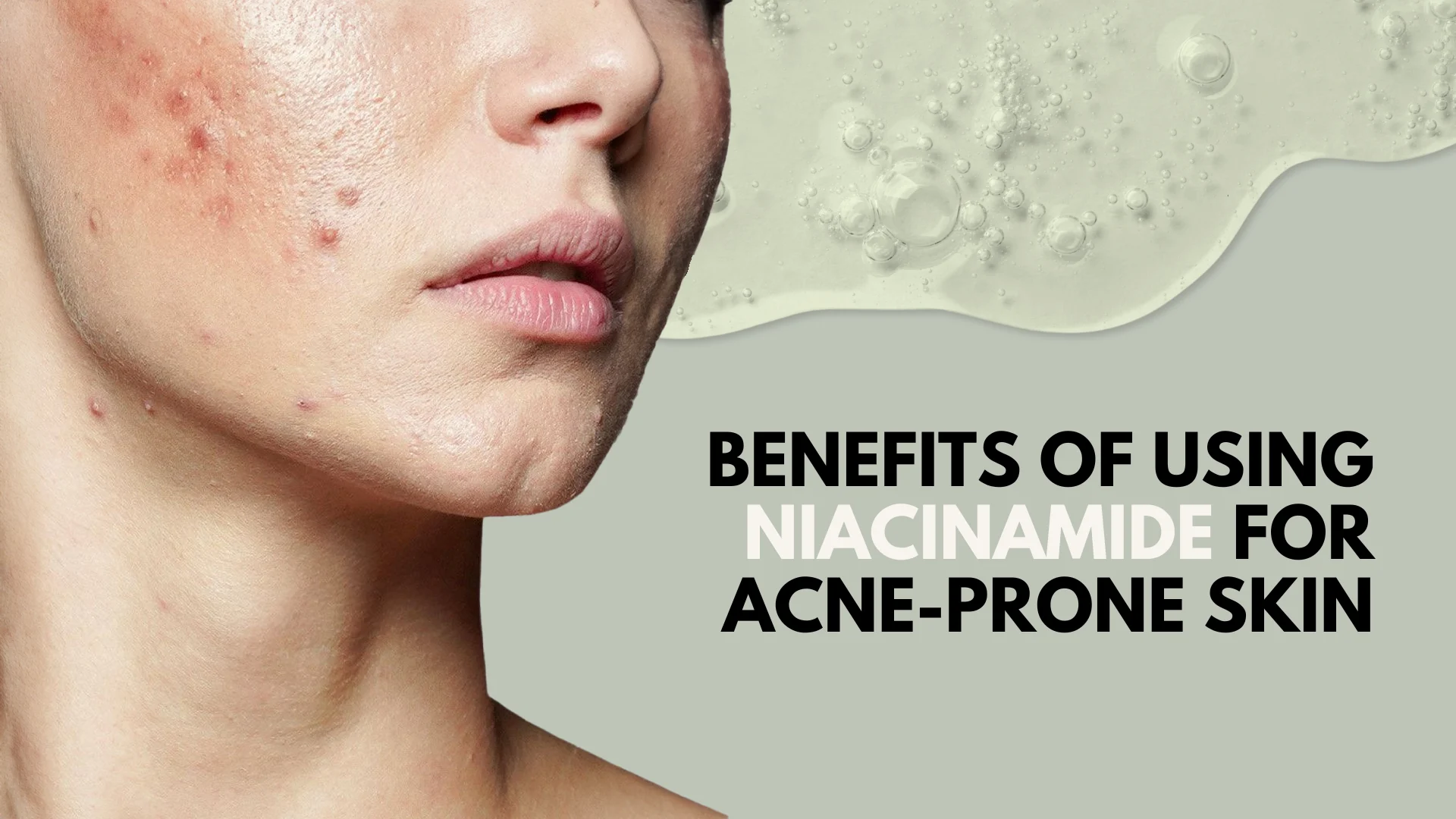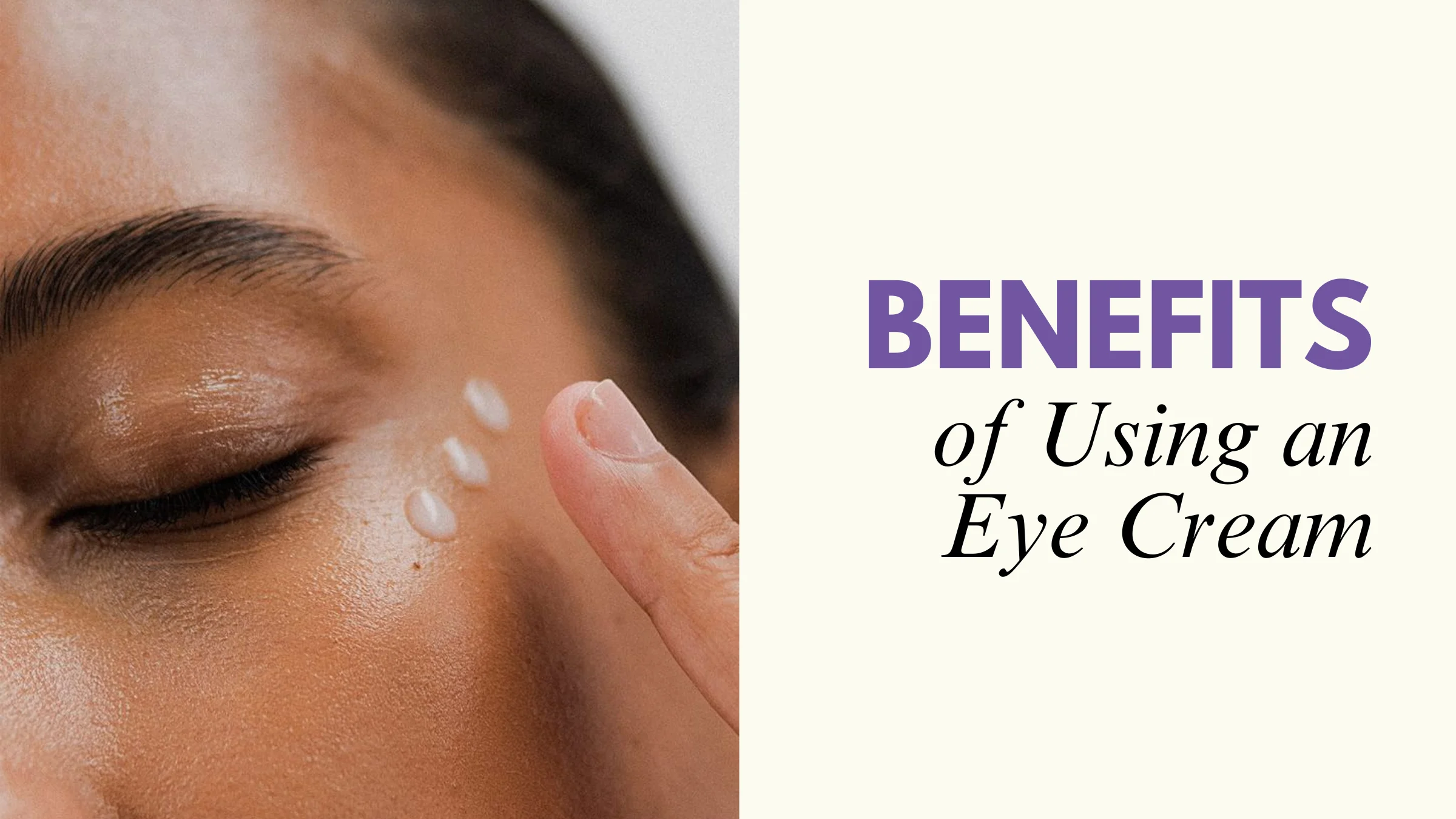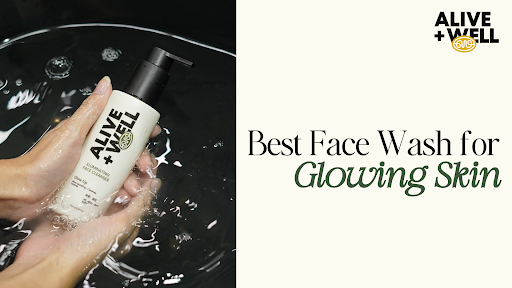Table of Contents
Introduction
What is Niacinamide?
How Does Acne Develop?
Benefits of Niacinamide for Acne-Prone Skin
Anti-inflammatory
Controls Oil
Minimizes Pores
Protects Skin
Fights Aging
How to Use Niacinamide in Your Routine
Conclusion
What is Niacinamide?
Niacinamide (nicotinamide) is a water-soluble form of vitamin B3 that plays a vital role in maintaining the health of your skin. Known for its compatibility with all skin types, niacinamide is widely used in serums, creams, and moisturizers to address various concerns, especially for acne-prone skin.
How does acne develop?
Development of acne is not an overnight process, it takes a lot to happen behind the surface of the skin for breakouts to appear.
- Excess Sebum Production: The skin’s oil glands produce too much sebum, often triggered by hormones such as androgens.
- Clogged Pores: Dead skin cells and excess oil can block hair follicles, creating an ideal environment for acne to form.
- Bacterial Growth: The blocked pores create an ideal breeding grounds for bacteria like Cutibacterium acnes, which further intensifies inflammation.
- Inflammation: The immune system responds to the bacteria buildup, leading to redness, swelling, and the development of pimples or cysts.
Best Niacinamide for Acne-Prone Skin
When it comes to selecting the best niacinamide for acne-prone skin in India—without focusing on specific brand names—it’s essential to understand what qualities and formulations make a niacinamide serum effective and suitable for your skin type. Acne-prone skin requires ingredients that not only target breakouts but also prevent post-acne marks and maintain overall skin health.
Niacinamide is widely considered one of the best ingredients for acne-prone skin due to its gentle yet powerful properties. Here’s what makes it effective:
Key Benefits:
-
Reduces Sebum Production: Helps balance oil levels, making skin less prone to clogged pores and breakouts.
-
Minimizes Pore Appearance: Tightens pores over time, reducing their visibility.
-
Anti-Inflammatory: Calms redness and swelling from active acne.
-
Strengthens the Skin Barrier: Reduces skin sensitivity and improves resilience.
Is Niacinamide Good for Acne Scars?
Yes, niacinamide is beneficial for treating acne scars, particularly post-inflammatory hyperpigmentation (PIH)—the dark marks left after pimples heal.
How It Helps:
-
Brightens Skin: Inhibits melanin transfer to skin cells, helping to fade dark spots.
-
Promotes Skin Repair: Improves overall skin texture and accelerates healing.
-
Supports Collagen Production (indirectly): Long-term use may improve the appearance of shallow atrophic scars when paired with other treatments.
Important Note: Niacinamide does not significantly affect deep pitted (icepick or boxcar) scars, which usually require dermatological treatments like microneedling or chemical peels.
Best Niacinamide Serum for Acne Scars
To choose the most effective niacinamide serum for acne scars, focus on these attributes:
Recommended Formula Criteria:
-
Niacinamide 5–10%: High enough to brighten but not overly irritating.
-
Supporting Actives:
-
Alpha Arbutin or Licorice Root: For enhanced pigmentation reduction.
-
Tranexamic Acid: Helps lighten persistent dark spots.
-
Zinc PCA: Reduces inflammation and supports healing.
-
-
Non-comedogenic and Fragrance-Free: Prevents further irritation or breakouts.
Routine Tip: Pairing niacinamide with a gentle exfoliant like PHA or azelaic acid can enhance fading of scars—just avoid using strong exfoliants and niacinamide at the same time unless your skin is well-adapted.
Best Niacinamide Serum for Hyperpigmentation
Hyperpigmentation can result from acne, sun exposure, or hormonal changes. Niacinamide is an excellent ingredient to treat it thanks to its depigmenting and anti-inflammatory properties.
Ideal Product Features:
-
5–10% Niacinamide: Higher concentrations (up to 10%) are most effective for fading spots.
-
Synergistic Ingredients:
-
Vitamin C (SAP or MAP, not ascorbic acid) for brightening.
-
Kojic Acid or Alpha Arbutin for enhanced lightening effects.
-
Hyaluronic Acid to keep the skin hydrated and plump.
-
-
pH-balanced and alcohol-free to avoid irritation, which can worsen pigmentation.
Skin Types: Suitable for all skin types, especially sensitive skin, as it treats pigmentation without exfoliating or causing irritation.
Summary Table
| Concern | Ideal Niacinamide % | Supporting Ingredients | Texture |
|---|---|---|---|
| Acne-Prone Skin | 5–10% | Zinc, Panthenol | Lightweight, water-based |
| Acne Scars | 5–10% | Alpha Arbutin, Licorice, Tranexamic Acid | Non-comedogenic |
| Hyperpigmentation | 5–10% | Vitamin C (SAP/MAP), Kojic Acid, HA | Gentle, fragrance-free |
What Is Niacinamide and Why It Works for Acne?
Niacinamide, also known as Vitamin B3, is a water-soluble vitamin that has become a hero ingredient in skincare. For acne-prone skin, its benefits include:
Sebum regulation: Niacinamide helps reduce excess oil production, which is one of the primary causes of acne.
Anti-inflammatory effects: It reduces redness and swelling, calming active breakouts.
Strengthening the skin barrier: This helps prevent moisture loss and protects against bacteria and pollutants.
Brightening effect: Niacinamide helps fade post-inflammatory hyperpigmentation (PIH), commonly seen after acne heals.
Improvement in skin texture: With continued use, it helps refine pores and even out skin texture.
Key Benefits of Using Niacinamide for Acne-Prone Skin
Niacinamide is a well-known ingredient in acne management. A review of eight clinical trials found that in six of them, niacinamide on the skin helped reduce acne as much as other common acne treatments or compared to before treatment.
1. Anti-inflammatory
Niacinamide works like a calming balm for irritated and troubled skin. Packed with powerful anti-inflammatory abilities, it reduces redness, irritation, and discomfort that often accompany acne breakouts. By soothing inflammation, niacinamide not only cools down the compromised skin but also reduces the risk of future breakouts and acne scars.
2. Lowers sebum production
Acne-prone skin produces excess sebum, which makes you look greasy all day. Too much sebum mixes with dead skin cells and clogs your pores, which consequently gives rise to pimples and blackheads. Niacinamide signals your skin to slow down the oil production, making your pores less likely to get clogged, meaning a breakout-free skin ahead.
3.Reduces the appearance of pores
Niacinamide is your secret weapon to tackle enlarged pores. Niacinamide tightens and minimizes the appearance of pores, giving you a smoother, more refined skin texture. Furthermore, more niacinamide promotes cell turnover, which makes your skin shed dead cells more efficiently, making your pores appear more refined.
4. Protection from environmental damage
As a powerful antioxidant, Niacinamide provides defense against daily environmental stressors like pollution, UV rays, and toxins. By reinforcing the skin barrier, niacinamide makes your skin more resilient and less prone to irritation.
5. Decrease fine lines and wrinkles
Niacinamide does much more than fighting acne- it’s also a powerful ally in your anti-aging routine. By accelerating collagen and elastin production in your skin, niacinamide helps to smooth away fine lines and wrinkles. This boost makes your complexion appear firmer, plumper, and radiant from within.
How to Incorporate Niacinamide into Your Routine?
- Concentrations: opt for products with 2–10% niacinamide as this range is effective and well-tolerated by skin.
- Compatible Ingredients: Niacinamide works well with retinol, vitamin C, hyaluronic acid, and most other skincare actives.
- Application: After cleansing, apply 2-3 drops followed by thicker serums or moisturizers. For better results, use it both in the morning and at night.
- Patch Test: Always patch test before full application to check for sensitivity.
Niacinamide is a gentle ingredient known for its versatility and multiple benefits for acne-prone skin. From calming inflammation and reducing sebum production, it helps in improving overall skin texture, making it a must-have for acne-prone skin.
FAQ
Is niacinamide good for acne skin?
Niacinamide helps to regulate sebum production, keeping it in check and preventing clogged pores. Anti-Inflammatory Properties: Acne is often accompanied by redness and inflammation. Niacinamide’s anti-inflammatory properties can help soothe irritated skin and reduce the redness associated with acne.
Will niacinamide remove acne marks?
Yes, niacinamide can help reduce the appearance of acne marks and scars. It works by reducing inflammation, fading dark spots, and promoting collagen production. Niacinamide is a form of vitamin B3 that is often used in skincare products for its various benefits.
Can I put niacinamide on active acne?
Topical niacinamide also inhibits the production of oil, which is a benefit to people dealing with acne. The element is also non-irritating compared to most other acne treatments on the market. It makes for an attractive treatment option for people with sensitive or dry skin.
Why is my skin getting darker after using niacinamide?
Skin darkening after using niacinamide can be due to a few reasons. It could be a temporary “purge” as the skin adjusts to the active ingredient, or it might indicate a skin reaction or interaction with other skincare products.
Is niacinamide good for oily, acne-prone skin?
Yes, niacinamide is generally considered beneficial for oily and acne-prone skin. Its ability to regulate sebum production, reduce inflammation, and minimize pores makes it a valuable addition to skincare routines for these skin types.
Is it okay to use 10% niacinamide for beginners?
While a 10% niacinamide serum can be effective, it’s generally recommended for beginners to start with a lower concentration like 5%. This allows your skin to adjust to the ingredient and reduces the risk of irritation.
What not to mix with niacinamide?
Niacinamide should generally be avoided when combined with acidic ingredients like AHAs (Alpha Hydroxy Acids) and BHAs (Beta Hydroxy Acids), as well as Vitamin C, as these can reduce its effectiveness or cause irritation.
Can niacinamide remove acne?
Clinical trials have shown significant improvements in acne severity and PIH with topical niacinamide application. These findings solidify its position as a valuable ingredient in acne scar treatment.
Which is better, 5% or 10% niacinamide?
More noticeable effects: Not only does the 10% concentration offer quicker results, but these results are often more pronounced. Improvements to skin texture, tone, pigmentation, fine lines, and breakouts usually stand out more clearly with 10% niacinamide.



